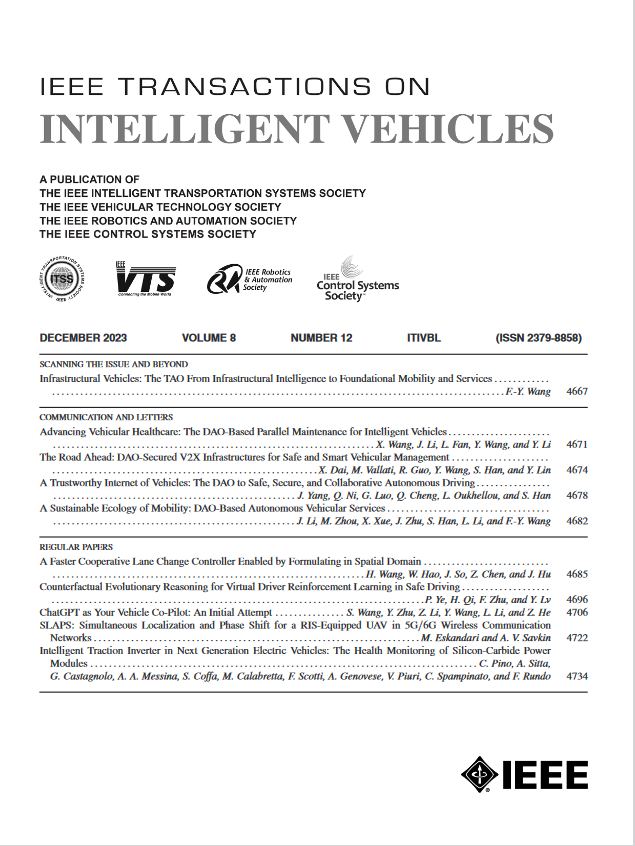Relevance Inference Based on Direct Contribution: Counterfactual Explanation to Deep Networks for Intelligent Decision-Making
IF 14
1区 工程技术
Q1 COMPUTER SCIENCE, ARTIFICIAL INTELLIGENCE
引用次数: 0
Abstract
With the widespread application of Deep Learning (DL), the black-box characteristics of DL raise questions, especially in high-stake decision-making fields like autonomous driving. Consequently, there is a growing demand for research on the interpretability of DL, leading to the emergence of eXplainable Artificial Intelligence as a current research hotspot. Current research on DL interpretability primarily focuses on transparency and post-hoc interpretability. Enhancing interpretability in transparency often requires targeted modifications to the model structure, potentially compromising the model's accuracy. Conversely, improving the interpretability of DL models based on post-hoc interpretability usually does not necessitate adjustments to the model itself. To provide a fast and accurate counterfactual explanation of DL without compromising its performance, this paper proposes a post-hoc interpretation method called relevance inference based on direct contribution to employ counterfactual reasoning in DL. In this method, direct contribution is first designed by improving Layer-wise Relevance Propagation to measure the relevance between the outputs and the inputs. Subsequently, we produce counterfactual examples based on direct contribution. Ultimately, counterfactual results for the DL model are obtained with these counterfactual examples. These counterfactual results effectively describe the behavioral boundaries of the model, facilitating a better understanding of its behavior. Additionally, direct contribution offers an easily implementable interpretable analysis method for studying model behavior. Experiments conducted on various datasets demonstrate that relevance inference can be more efficiently and accurately generate counterfactual examples compared to the state-of-the-art methods, aiding in the analysis of behavioral boundaries in intelligent decision-making models for vehicles.基于直接贡献的关联推理:智能决策深度网络的反事实解释
随着深度学习(Deep Learning, DL)的广泛应用,深度学习的黑箱特性引发了一些问题,尤其是在自动驾驶等高风险决策领域。因此,对深度学习可解释性的研究需求日益增长,可解释性人工智能成为当前的研究热点。目前对深度学习可解释性的研究主要集中在透明度和事后可解释性方面。增强透明度的可解释性通常需要对模型结构进行有针对性的修改,这可能会损害模型的准确性。相反,基于事后可解释性提高DL模型的可解释性通常不需要对模型本身进行调整。为了在不影响深度学习性能的前提下提供快速准确的反事实解释,本文提出了一种基于直接贡献的关联推理的事后解释方法,将反事实推理应用于深度学习。在该方法中,首先通过改进分层相关传播来设计直接贡献,以度量输出和输入之间的相关性。随后,我们基于直接贡献产生反事实例子。最后,利用这些反事实的例子得到了DL模型的反事实结果。这些反事实结果有效地描述了模型的行为边界,促进了对其行为的更好理解。此外,直接贡献为研究模型行为提供了一种易于实现的可解释的分析方法。在各种数据集上进行的实验表明,与最先进的方法相比,相关推理可以更有效、更准确地生成反事实示例,有助于分析车辆智能决策模型中的行为边界。
本文章由计算机程序翻译,如有差异,请以英文原文为准。
求助全文
约1分钟内获得全文
求助全文
来源期刊

IEEE Transactions on Intelligent Vehicles
Mathematics-Control and Optimization
CiteScore
12.10
自引率
13.40%
发文量
177
期刊介绍:
The IEEE Transactions on Intelligent Vehicles (T-IV) is a premier platform for publishing peer-reviewed articles that present innovative research concepts, application results, significant theoretical findings, and application case studies in the field of intelligent vehicles. With a particular emphasis on automated vehicles within roadway environments, T-IV aims to raise awareness of pressing research and application challenges.
Our focus is on providing critical information to the intelligent vehicle community, serving as a dissemination vehicle for IEEE ITS Society members and others interested in learning about the state-of-the-art developments and progress in research and applications related to intelligent vehicles. Join us in advancing knowledge and innovation in this dynamic field.
 求助内容:
求助内容: 应助结果提醒方式:
应助结果提醒方式:


